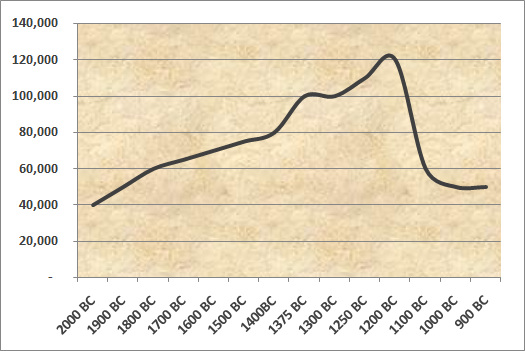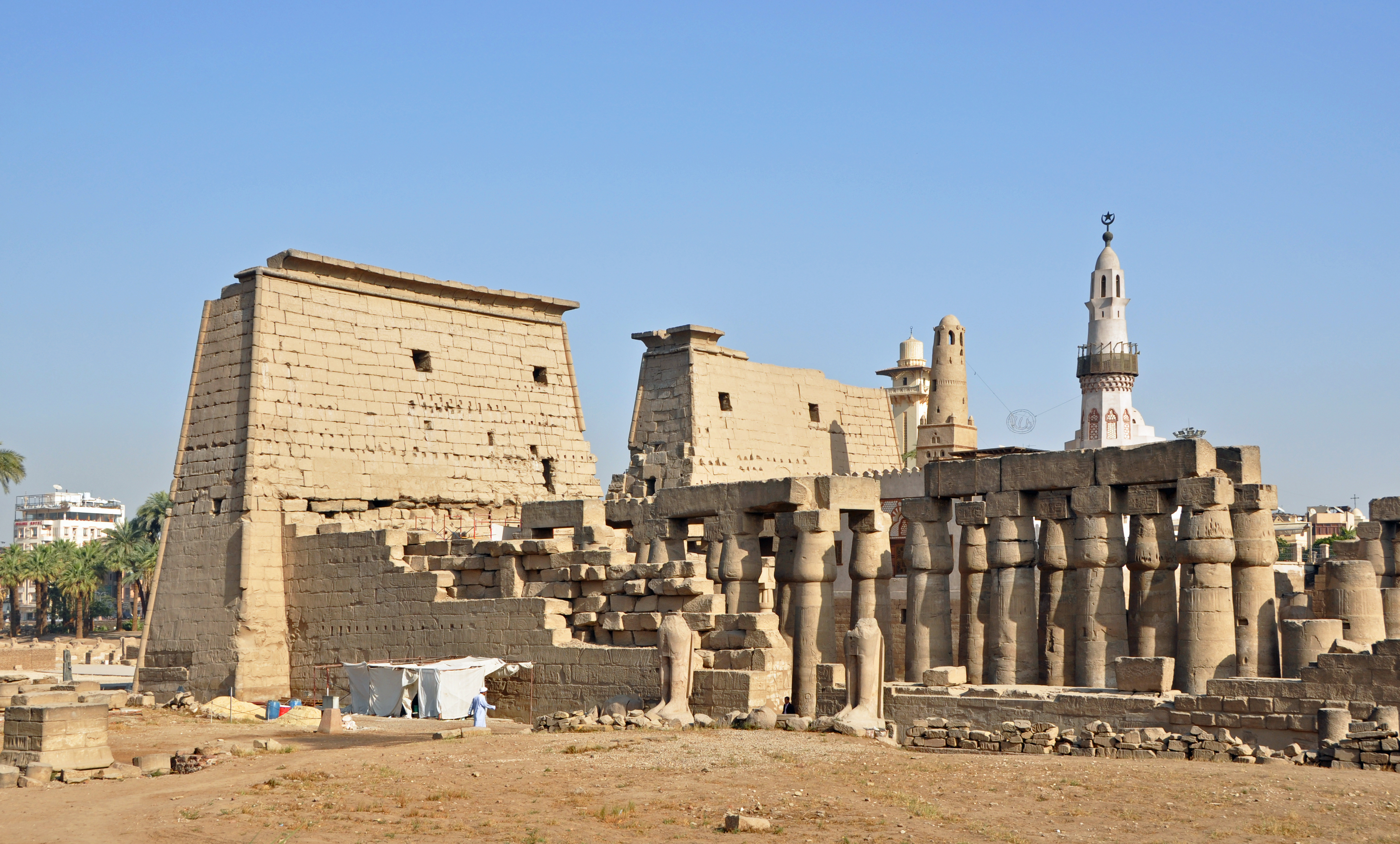|
TT22
The Theban Tomb TT22 is located in Sheikh Abd el-Qurna, part of the Theban Necropolis, on the west bank of the Nile, opposite to Luxor. It is the burial place of the ancient Egyptian Wah, who was royal butler during the early Eighteenth Dynasty. Wah also held the title of overseer of the ''ruyt'', which was an entrance to the palace (''per nesu''). The overseer of the ''ruyt'' may have controlled access to the palace including the office of the vizier.O'Connor, David and Cline, Eric H. ''Thutmose III: A New Biography'' University of Michigan Press. 2006 Tomb decorations The tomb decorations are described in some detail by Mackay in a 1917 publication. The scenes in the tomb are laid out according to a square grid (each 53 mm on the side). The sketches from the tomb included include a scene of a couple at a banquet and some duck hunting scenes in the marshes. The seated couple is accompanied by their daughter. In the hunting and fowling scene the deceased is accompanied by his w ... [...More Info...] [...Related Items...] OR: [Wikipedia] [Google] [Baidu] |
List Of Theban Tombs
The Theban Necropolis is located on the west bank of the Nile, opposite Luxor, in Egypt. As well as the more famous royal tombs located in the Valley of the Kings and the Valley of the Queens, there are numerous other tombs, more commonly referred to as Tombs of the Nobles (Luxor), the burial places of some of the powerful courtiers and persons of the ancient city. There are at least 415 cataloged tombs, designated TT for Theban Tomb. There are other tombs whose position has been lost, or for some other reason do not conform to this classification. Theban tombs tended to have clay funerary cones placed over the entrance of the tomb chapels. During the New Kingdom of Egypt, New Kingdom they were inscribed with the title and name of the tomb owner, sometimes with short prayers. Of the 400 recorded sets of cones, only about 80 come from cataloged tombs. The numbering system was first published Arthur Weigall's 1908 ''Report on the Tombs of Shêkh Abd’ el Gûrneh and el Assasîf'' ( ... [...More Info...] [...Related Items...] OR: [Wikipedia] [Google] [Baidu] |
Sheikh Abd El-Qurna
The necropolis of Sheikh Abd el-Qurna () is located on the West Bank at Thebes, Egypt, Thebes in Upper Egypt. It is part of the archaeological area of Deir el-Bahari, and named after the domed tomb of the local saint. This is the most frequently visited cemetery on the Theban west bank, with the largest concentration of private tombs. Tombs * TT21 User, Scribe, Steward of king Thutmose I * TT22 Wah, later usurped by Meryamun * TT23 – TT23, Tjay * TT30 Khonsmose, Amun treasury official, Ramesside * TT31 – Khonsu (TT31), Khonsu * TT38 Djeserkaraseneb, Scribe, Counter of grain in the granary of the divine offerings of Amun * TT41 Amenemopet called Ipy, Amun temple high steward * TT42 Amenmose, Captain of troops, Eyes of the King in the Two Lands of the Retenu * TT43 Neferrenpet, Overseer of the kitchen (stores?) of Pharaoh * TT44 Amenemhab, wab-priest in front of Amun * TT45 Djehuty, Steward of high priest of Amun Mery (High Priest of Amun), Mery * TT46 Ramose, Steward o ... [...More Info...] [...Related Items...] OR: [Wikipedia] [Google] [Baidu] |
Thebes, Egypt
Thebes (, , ''Thēbai''), known to the ancient Egyptians as Waset, was an ancient Egyptian city located along the Nile about south of the Mediterranean. Its ruins lie within the modern Egyptian city of Luxor. Thebes was the main city of the fourth Upper Egyptian nome (Sceptre nome) and was the capital of Egypt for long periods during the Middle Kingdom and New Kingdom eras. It was close to Nubia and the Eastern Desert, with its valuable mineral resources and trade routes. It was a religious center and the most venerated city during many periods of ancient Egyptian history. The site of Thebes includes areas on both the eastern bank of the Nile, where the temples of Karnak and Luxor stand and where the city was situated; and the western bank, where a necropolis of large private and royal cemeteries and funerary complexes can be found. In 1979, the ruins of ancient Thebes were classified by UNESCO as a World Heritage Site. Toponymy The Egyptian name for Thebes was ''w� ... [...More Info...] [...Related Items...] OR: [Wikipedia] [Google] [Baidu] |
Theban Necropolis
The Theban Necropolis () is a necropolis on the west bank of the Nile, opposite Thebes, Egypt, Thebes (Luxor) in Upper Egypt. It was used for ritual burials for much of the Ancient Egypt, Pharaonic period, especially during the New Kingdom of Egypt, New Kingdom. Mortuary temples * Deir el-Bahri ** Mortuary Temple of Hatshepsut ** Deir el-Bahri#Mortuary Temple of Mentuhotep II, Mortuary temple of Mentuhotep II ** Deir el-Bahri#Mortuary Temple of Thutmoses III, Mortuary temple of Thutmose III * Medinet Habu * Mortuary Temple of Amenhotep III ** Colossi of Memnon * Mortuary Temple of Merneptah * Mortuary Temple of Ramesses IV * Mortuary Temple of Thutmose IV * Mortuary Temple of Thutmose III * Mortuary Temple of Twosret * Temple of Nebwenenef * Kurna, Qurna ** Mortuary Temple of Seti I * Mortuary Temple of Amenhotep II * Ramesseum (Mortuary Temple of Ramesses II) Royal Necropolis * Valley of the Kings (Modern: "''Wadi el-Muluk''") * Valley of the Queens (Modern: "''Biban el-Harim''" ... [...More Info...] [...Related Items...] OR: [Wikipedia] [Google] [Baidu] |
Nile
The Nile (also known as the Nile River or River Nile) is a major north-flowing river in northeastern Africa. It flows into the Mediterranean Sea. The Nile is the longest river in Africa. It has historically been considered the List of river systems by length, longest river in the world, though this has been contested by research suggesting that the Amazon River is slightly longer.Amazon Longer Than Nile River, Scientists Say Of the world's major rivers, the Nile has one of the lowest average annual flow rates. About long, its drainage basin covers eleven countries: the Democratic Republic of the Congo, Tanzania, Burundi, Rwanda, Uganda, Kenya, Ethiopia, Eritrea, South Sudan, Sudan, and Egypt. In pa ... [...More Info...] [...Related Items...] OR: [Wikipedia] [Google] [Baidu] |
Luxor
Luxor is a city in Upper Egypt. Luxor had a population of 263,109 in 2020, with an area of approximately and is the capital of the Luxor Governorate. It is among the List of oldest continuously inhabited cities, oldest continuously inhabited cities in the world. Luxor has frequently been characterized as the ''world's greatest open-air museum'', as the ruins of the Egyptian temple complexes at Karnak and Luxor Temple, Luxor stand within the modern city. Immediately opposite, across the River Nile, lie the monuments, temples and tombs of the West Bank Theban Necropolis, which includes the Valley of the Kings and the Valley of the Queens. Thousands of tourists from all around the world arrive annually to visit Luxor's monuments, contributing greatly to the economy of the modern city. Yusuf Abu al-Haggag is the prominent Muslim historical figure of Luxor. Etymology The name ''Luxor'' derives from the Arabic , meaning "castle" or "palace", in the plural form ''al-quṣūr'' (� ... [...More Info...] [...Related Items...] OR: [Wikipedia] [Google] [Baidu] |
Ancient Egypt
Ancient Egypt () was a cradle of civilization concentrated along the lower reaches of the Nile River in Northeast Africa. It emerged from prehistoric Egypt around 3150BC (according to conventional Egyptian chronology), when Upper and Lower Egypt were amalgamated by Menes, who is believed by the majority of List of Egyptologists, Egyptologists to have been the same person as Narmer. The history of ancient Egypt unfolded as a series of stable kingdoms interspersed by the "Periodization of ancient Egypt, Intermediate Periods" of relative instability. These stable kingdoms existed in one of three periods: the Old Kingdom of Egypt, Old Kingdom of the Early Bronze Age; the Middle Kingdom of Egypt, Middle Kingdom of the Middle Bronze Age; or the New Kingdom of Egypt, New Kingdom of the Late Bronze Age. The pinnacle of ancient Egyptian power was achieved during the New Kingdom, which extended its rule to much of Nubia and a considerable portion of the Levant. After this period, Egypt ... [...More Info...] [...Related Items...] OR: [Wikipedia] [Google] [Baidu] |
Eighteenth Dynasty Of Egypt
The Eighteenth Dynasty of Egypt (notated Dynasty XVIII, alternatively 18th Dynasty or Dynasty 18) is classified as the first dynasty of the New Kingdom of Egypt, the era in which ancient Egypt achieved the peak of its power. The Eighteenth Dynasty spanned the period from 1550/1549 to 1292 BC. This dynasty is also known as the Thutmoside Dynasty for the four pharaohs named Thutmose. Several of Egypt's most famous pharaohs were from the Eighteenth Dynasty, including Tutankhamun. Other famous pharaohs of the dynasty include Hatshepsut (c. 1479 BC–1458 BC), the longest-reigning woman pharaoh of an indigenous dynasty, and Akhenaten (c. 1353–1336 BC), the "heretic pharaoh", with his Great Royal Wife, Nefertiti. The Eighteenth Dynasty is unique among Egyptian dynasties in that it had two Queen regnant, queens regnant, women who ruled as sole pharaoh: Hatshepsut and Neferneferuaten, usually identified as Nefertiti. History Early Dynasty XVIII Dynasty XVIII was founded by Ahmo ... [...More Info...] [...Related Items...] OR: [Wikipedia] [Google] [Baidu] |
Vizier (Ancient Egypt)
The vizier was the highest official in ancient Egypt to serve the pharaoh (king) during the Old, Middle, and New Kingdoms. Vizier is the generally accepted rendering of ancient Egyptian , etc., among Egyptologists. The ''Instruction of Rekhmire'' ('' Installation of the Vizier''), a New Kingdom text, defines many of the duties of the , and lays down codes of behavior. The viziers were often appointed by the pharaoh. During the 4th Dynasty and early 5th Dynasty, viziers were exclusively drawn from the royal family; from the period around the reign of Neferirkare Kakai onwards, they were chosen according to loyalty and talent or inherited the position from their fathers. Responsibilities The viziers were appointed by the pharaohs. The vizier's paramount duty was to supervise the running of the country, much like a prime minister. At times this included small details such as sampling the city's water supply. All other lesser supervisors and officials, such as tax collectors ... [...More Info...] [...Related Items...] OR: [Wikipedia] [Google] [Baidu] |
Persons And Names Of The Middle Kingdom And Early New Kingdom
A person (: people or persons, depending on context) is a being who has certain capacities or attributes such as reason, morality, consciousness or self-consciousness, and being a part of a culturally established form of social relations such as kinship, ownership of property, or legal responsibility. The defining features of ''personhood'' and, consequently, what makes a person count as a person, differ widely among cultures and contexts. In addition to the question of personhood, of what makes a being count as a person to begin with, there are further questions about ''personal identity'' and ''self'': both about what makes any particular person that particular person instead of another, and about what makes a person at one time the same person as they were or will be at another time despite any intervening changes. The plural form "people" is often used to refer to an entire nation or ethnic group (as in "a people"), and this was the original meaning of the word; it subseque ... [...More Info...] [...Related Items...] OR: [Wikipedia] [Google] [Baidu] |




